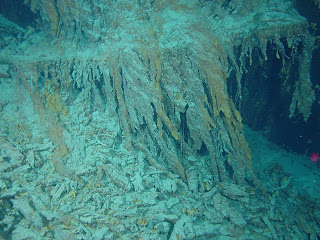I love when people send me interesting science articles, especially ones in the New York Times since I still haven’t figured out how to get into my account, and therefore still do not have access to their web content. Thanks to Endri for this one, about honey bees in NYC.
The Mystery of the Red Bees of Red Hook by Susan Dominus is about the feeding habits of honey bees, but it also offers a comedic commentary on health and nutrition as an added bonus. Bees that are being raised in Red Hook (Brooklyn, NY) and on Governor’s Island have been showing up in their hives with red bellies, and have been producing bright red honey combs.
 The mystery that remains is how the bees are getting access to the liquid. Neighbors have reported seeing the bees in unusually high numbers around the factory, but no one has pin pointed how they are getting to the liquid. The cherry factory declined to comment for the article, but did hire the New York City Beekeeper’s Association to help find a solution to the problem.The bee keepers were perplexed about what would turn the bees and their honey bright red, so they decided to investigate. The culprit turned out to be the Dell’s Maraschino Cherry factory. The bees have been feeding on the syrupy-sweet red liquid that you see in the containers of cherries that you can buy in the grocery store. Researchers tested the honey for the red dye (No. 40) used in the cherry liquid, and confirmed that the bees have been bingeing on the liquid produced at the factory.
The mystery that remains is how the bees are getting access to the liquid. Neighbors have reported seeing the bees in unusually high numbers around the factory, but no one has pin pointed how they are getting to the liquid. The cherry factory declined to comment for the article, but did hire the New York City Beekeeper’s Association to help find a solution to the problem.The bee keepers were perplexed about what would turn the bees and their honey bright red, so they decided to investigate. The culprit turned out to be the Dell’s Maraschino Cherry factory. The bees have been feeding on the syrupy-sweet red liquid that you see in the containers of cherries that you can buy in the grocery store. Researchers tested the honey for the red dye (No. 40) used in the cherry liquid, and confirmed that the bees have been bingeing on the liquid produced at the factory.
What I like most about Dominus’ treatment of the honey bees in the article is the way she paints them as disobedient children. Her opening centers on the fact that if the bees were raised right they wouldn’t be straying from home to go eat junk food. It’s a whimsical way to approach the topic, while inserting a little bit of her own commentary on human health and nutrition.


